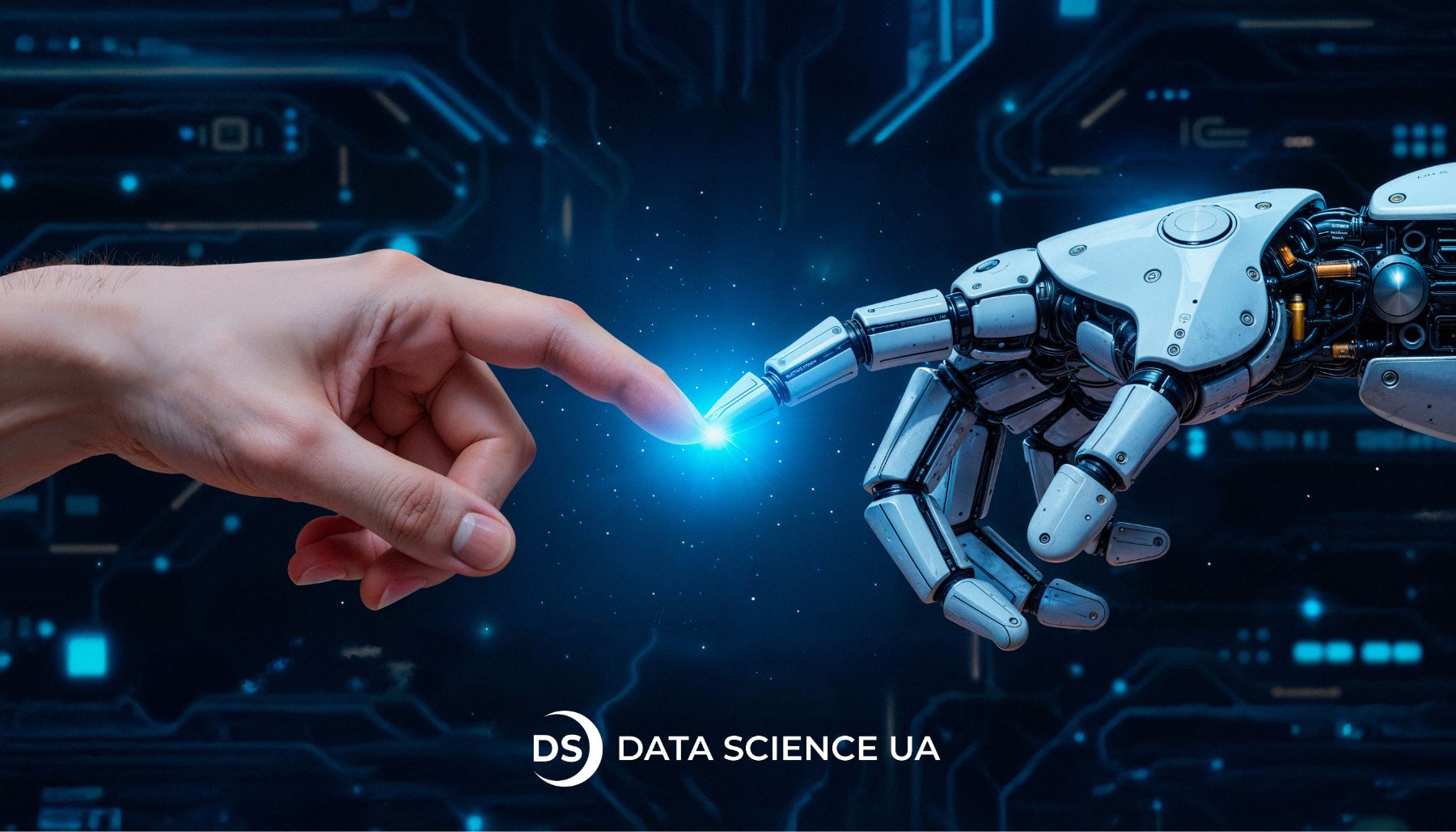Generative AI: Pros and cons
Most firms are searching for various ways to make their services better, optimize processes, and stay competitive in the quickly changing world of e-commerce. Generative AI is one of the most groundbreaking new technologies. This innovative approach is more than simply a fad; it will change how users engage with online platforms, promoting efficiency and creativity. Generative AI supports companies in meeting and achieving customer expectations through automated procedures, changing experiences, and offering innovative content.
What is Generative AI?
Algorithms that can produce new designs, data, or content from existing datasets are known by the term ‘generative AI’. Generative AI produces unique outputs like writing, graphics, and even product designs, in contrast to traditional AI, which mostly analyzes and processes data. This technology creates content that matches human creativity through the use of DL models, including Generative Adversarial Networks (GANs) and Variational Autoencoders (VAEs). However, there are challenges in adding AI to current systems. Many companies still use old technology that can’t easily support modern AI. Upgrading these systems can be costly and hard, especially to ensure they work well with existing setups. Another issue is data privacy. AI needs a lot of data to learn, which raises concerns about how personal information is handled. Data misuse and breaches are possible.
Understanding the Mechanism Behind Generative AI
The generator and discriminator neural networks are the foundation of generative AI. The discriminator compares the new data instances produced by the generator to actual data. It makes it possible to use generative AI in a number of fields, such as music, art, and—most importantly—e-commerce.
Generative AI has the potential to improve several aspects of e-commerce operations, such as customer service and product recommendations, which will increase efficiency and creativity.
 Image from Pexels (source)
Image from Pexels (source)
Generative AI in E-commerce: Key Reasons It’s Vital
Generative AI is vital for companies hoping to succeed in a competitive marketplace. Generative AI has become crucial for the following main reasons:
1) Personalization at Scale: By evaluating consumer information and preferences, generative AI helps companies create highly customized shopping experiences that are tailored to each customer’s requirements. This degree of customization boosts client loyalty and happiness.
2) Cost Efficiency: Generative AI helps companies understand what customers want, allowing them to make shopping experiences that fit each person’s needs. With automating tasks, it also helps businesses save money and make better use of their resources. Companies can concentrate on strategic objectives instead of repetitive chores by reducing manual intervention.
3) Increased Creativity: Generative AI allows companies to keep improving by creating new product designs and marketing materials.
4) Data Insights: Generative AI analyzes vast amounts of data to identify trends that assist companies in making informed decisions. With generative AI firms can easily adjust to changes.
5) Scalability: Generative AI can easily grow to meet the needs of expanding e-commerce companies. It can handle more content or manage more customer questions as the business changes.
6) Improved Customer Engagement: Generative AI enhances customer interaction by providing personalized suggestions and quick responses, which increases sales and keeps customers coming back.
Applications of Generative AI in E-commerce
Generative AI is making significant strides in various applications within this sector. These are a few of the most significant applications:
Personalized Product Recommendations
Do you remember when Amazon started showing you products you didn’t even know you wanted? Generative AI analyzes everything from your past purchases to how long you look at certain items. It’s like having a personal shopper who remembers every tiny detail about your preferences. The result? Recommendations that feel surprisingly personal and accurate.
Product Descriptions That Don’t Sound Like Robots
Gone are the days of boring, template-style product descriptions. Tools like Copy.ai are revolutionizing how online stores talk about their products. They’re creating descriptions that not only inform but engage – catching your attention while boosting the store’s search rankings. It’s content that actually helps you make decisions, not just fill space.
Customer Service That Never Sleeps
Those helpful chat windows on Shopify stores have gotten surprisingly smart. These days, AI chatbots can do everything, day or night, from tracking orders to resolving common issues. They’re quick with simple answers and smart enough to know when to bring in human help. After that they learn from every conversation, getting better at helping customers over time.
Dynamic Pricing Models
Walmart’s pricing isn’t just random – their AI watches market trends, competitor prices, and even local demand. This means prices adjust in real time to give you fair deals while keeping the business competitive. It’s like having thousands of price analysts working around the clock.
Product Design and Development
Nike’s approach to designing new products has gone high-tech. Generative AI in e-commerce analyzes customer feedback, current trends, and sales data to help create designs people want. It’s speeding up the journey from idea to store shelf while ensuring new products match what customers are looking for.
Searches That Understand What You Mean
eBay’s search has evolved far beyond simple keyword matching. Generative AI understands context and learns from how people shop. Type in “summer party outfit” and it knows you might want dresses, sandals, and accessories – even if you didn’t specifically mention them.
Virtual Try-On and Customization
Generative AI enables virtual try-on experiences, allowing customers to visualize products before purchase. L’Oreal offers an AI-based app that lets users try on makeup virtually, enhancing the online shopping experience. This feature not only boosts customer confidence in their purchases but also reduces return rates.
Fraud Detection and Prevention
PayPal’s AI security is a real game-changer in generative AI. They use this technology to watch every transaction. In real time, it detects anomalous trends and possible fraud, frequently identifying issues before they have an impact on clients. This invisible protection makes online shopping safer for everyone.
Supply Chain Optimization
Imagine a supply chain that thinks ahead – that’s exactly what Zara has built with AI. Their smart system doesn’t just track inventory; it predicts fashion trends and consumer behavior before they happen. This means no more guessing games about what to produce or when. When a style starts trending on social media, Zara’s AI is already adjusting generative AI for e-commerce to meet the upcoming demand.
Predictive Analytics for Inventory Management
The real magic happens in the numbers: fewer unsold items gathering dust, lower storage costs, and happier customers who actually find what they’re looking for. Target is taking this even further with a predictive AI system that’s basically a crystal ball for inventory. They reached a balance with a number of stock products with this model.
Visual Content Generation
Adobe’s AI generative AI in e-commerce tools is transforming product photography. They can enhance images, create consistent looks across thousands of products, and even generate lifestyle shots without expensive photo shoots. It’s making online shopping more visually appealing and helping smaller businesses compete with larger ones.
 Image from Pexels (source)
Image from Pexels (source)
Benefits of Generative AI for E-commerce Businesses
The integration of generative AI in the field of e-commerce plays an important role in this market. Here are some key advantages:
Personalized Product Recommendations
Netflix’s recommendation magic isn’t just for movies anymore. You can think of it as a virtual store that knows exactly what you’ll love. Modern AI accomplishes this simply by researching your tastes like a considerate friend and making recommendations for goods you’ll genuinely want to purchase. The result of the integration of generative AI for e-commerce is that happier customers find what they want faster and businesses see more sales.
Enhanced Customer Service with AI Chatbots
Remember when H&M made waves by introducing chatbots that were like a real human? With the help of chatbot development services, their AI assistants handle customer questions with surprising intelligence – from size advice to order tracking
Dynamic Pricing Optimization
Using AI-driven insights, Airbnb modifies rental costs in response to changes in demand, enabling owners to maximize profits while offering visitors value.
Automated Content Generation
Zalando cracked the code on automated content that doesn’t sound robotic. Generative AI crafts product descriptions and marketing messages that speak directly to different customer groups.
Visual Search Capabilities
ASOS took window shopping digitally. See something you like on the street? Snap a photo, and generative AI finds similar items in seconds. It’s turned the whole world into a shopping catalog, making it ridiculously easy to find exactly what you’re looking for.
Enhanced Marketing Strategies
Today’s AI doesn’t just send ads – it creates campaigns that feel personally crafted for you. By analyzing mountains of customer data, generative AI spots trends and preferences we might miss helping brands create messages that truly connect.
 Image from Pexels (source)
Image from Pexels (source)
Obstacles to Adopting Generative AI in E-commerce
Getting started with generative AI might feel like climbing a mountain when you look at the costs and technical setup needed, but here’s the good news – there are plenty of beginner-friendly solutions that won’t break the bank. Dealing with messy data and old computer systems can give any business owner a headache, but the Data Science UA team can handle these challenges like a pro, making the switch much smoother than you’d think. While privacy rules and regulations might sound like a scary maze to navigate, today’s generative AI solutions come with built-in safeguards that help you stay on the right side of the law without losing sleep over it. Some worry that bringing in generative AI means losing that human touch in customer service, but it actually does the opposite – it handles the routine stuff so your team can focus on those meaningful customer moments that really matter. Even though some team members might cross their arms at the mention of AI, the right training and open conversation about how AI supports (not replaces) their work can turn those frowns upside down.
Data Privacy and Security Concerns
The use of generative AI raises significant data privacy and security issues.Organizations must cope with rules such as GDPR to protect customer data from breaches. For instance, Facebook faced scrutiny over data privacy practices, highlighting the importance of secure data handling.
Integration Challenges with Existing Systems
Integrating generative AI in e-commerce systems can be complex and resource-intensive. Many businesses struggle with compatibility issues, leading to delays in implementation. Best Buy faced challenges when integrating AI tools with their legacy systems, impacting their operational efficiency.
Lack of Skilled AI Talent
Many e-commerce companies struggle to find qualified talent to lead their AI initiatives. Shopify has invested in training programs to cultivate internal AI expertise.
Ethical and Transparency Issues
Concerns around the ethical use of generative AI e-commerce and the need for transparency in decision-making processes present significant challenges. Companies like Google have faced criticism over the moral implications of their AI technologies, emphasizing the need for responsible AI practices.
 Image from Pexels (source)
Image from Pexels (source)
How to Integrate Generative AI Solutions into E-commerce Operations
Integrating generative AI operations requires a strategic approach. Organizations can successfully integrate AI technologies by following these steps:
Assess Business Needs and Identify Opportunities
Before diving into AI, take a good look at what your business really needs. Think of it like shopping for a new wardrobe – you don’t buy everything at once, right? Maybe your customer service needs a boost, or your product recommendations could use some fine-tuning. The key is starting with what matters most to your business and your customers.
Choose the Right AI Tools and Platforms
With so many AI tools out there, choosing the right ones can feel overwhelming. You can go on without the fanciest tools to make an impact. Look for solutions that play nice with your current systems and can grow with your business. Think about assembling LEGO blocks; you can begin with the most basic components and add more as you go. Companies should evaluate various options based on their capabilities, scalability, and compatibility with existing systems.
Prepare and Clean the Data
Data quality is essential for effective AI performance. It means taking time to sort through your customer information, sales data, and inventory records. To improve the efficiency of its AI algorithms, Zalando places a strong emphasis on data hygiene.
Implement and Test AI Solutions
Once the data is prepared, businesses can implement AI solutions and conduct thorough testing to ensure they meet desired outcomes. Start small, test thoroughly, and listen to feedback from both your team and customers. If something’s not working quite right, tweak it until it feels comfortable. Walmart iteratively tests its AI systems to refine performance and enhance accuracy.
Train Staff and Monitor Performance
Your team needs to feel confident working with these new AI tools because training staff to work effectively with AI technologies is important for maximizing benefits. Continuous monitoring of AI performance allows firms to make necessary adjustments and improvements. Keep an eye on data science development firm just track how your business is progressing and make adjustments based on what you learn. Amazon invests in ongoing training programs for employees to adapt to new AI tools.
Foster a Culture of Innovation
Create an environment where trying new things is celebrated, not feared. Encourage your team to experiment with AI and share their ideas. We definitely understand that all your ideas might not work out the way you want, but the winners could be game-changers.
 Image from Pexels (source)
Image from Pexels (source)
Future Outlook for Generative AI in E-commerce
With developments anticipated to further improve efficiency, automation, and personalization, the future of generative AI in e-commerce appears bright. As technology evolves, businesses will increasingly harness AI capabilities to create seamless shopping experiences and optimize operations. The integration of AI with other emerging technologies, such as augmented reality and blockchain, will likely drive even greater innovation in the e-commerce sector.
1) Increased Personalization: The capacity to provide hyper-personalized experiences will be further improved by future developments in generative AI, which will customize offers and suggestions based on real-time data and consumer behavior.
2) Better Automation: As generative AI technology develops, e-commerce processes will be automated, reducing the need for human intervention and supporting more effective company operations.
3) Improved Customer Engagement: Through interactive experiences like virtual try-ons and tailored marketing efforts, generative AI will be key to increase customer engagement.
4) Emerging Technologies: Customers will be able to engage with products in unexpected ways as generative AI converges with technologies like virtual reality (VR) and augmented reality (AR) to create immersive shopping experiences.
5) Sustainability Initiatives: With speeding supply chains and cutting waste with predictive analytics, generative AI can assist e-commerce companies in implementing more environmentally friendly procedures.
Our view on the future of Generative AI!
AI in e-commerce isn’t about following trends – it’s about building a stronger, more competitive business. Every major player in e-commerce today started with small steps toward automation and intelligence. How well you apply and modify these technologies to meet your unique business requirements ends up being the primary differentiator.
Successful AI adoption happens through thoughtful strategy, careful implementation, and continuous improvement. Focus on creating value for your customers and efficiency for your operations. Step by step, use what you have, and build the business successfully.
The future of e-commerce belongs to businesses that harness AI effectively. Your journey toward that future begins with your next decision. What will you automate first? Which processes need intelligence most? How will you use AI to stand out in your market?
The time for action is now. With this roadmap in hand, you’re ready to transform your e-commerce business into a more intelligent, efficient, and customer-focused operation and we at Data Science UA will be delighted to help you!
 Image from Pexels (source)
Image from Pexels (source)
FAQ
What are the main areas in e-commerce where generative AI is applied?
AI studies what customers love and suggests products they’ll actually want to buy. No more random suggestions – just personalized picks that make sense. When you shop online, AI remembers your style, size preferences, and past purchases to show you items you’re most likely to love. AI chatbots work 24/7, answering questions instantly. They handle everything from “Where’s my order?” to “What size should I buy?” – and they never need coffee breaks. When complex issues arise, they are smoothly handed over to human agents.
How can Generative AI enhance customer experiences in online shopping?
AI remembers what you like and shows you more of it. It’s personalized shopping without the pushy sales tactics. Each time you browse, your experience gets more tailored to your preferences. Type what you want in normal words, and AI understands. No more endless scrolling through pages of products. The search understands your intent, not just your exact words. Questions at 3 AM? No problem. AI assistants are always ready to help, and they get smarter with every conversation. They remember your previous interactions and can pick up where you left off.
How does Generative AI impact supply chain management in e-commerce?
AI predicts exactly what needs to be where so popular items stay in stock without wasting space on slow movers. This means businesses save money and customers get what they want faster. Smart systems figure out the fastest, cheapest ways to get customer orders. They can even predict and prevent delivery problems before they happen. This means more reliable delivery times and fewer disappointments. By getting the right products to the right places at the right time, businesses save money and customers get their orders faster. This efficiency means better prices and service for everyone.





